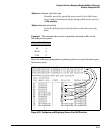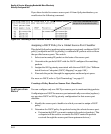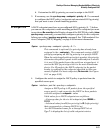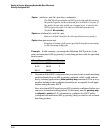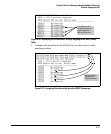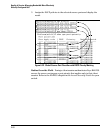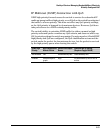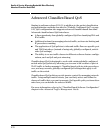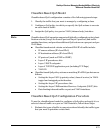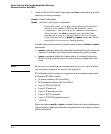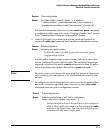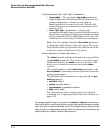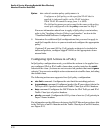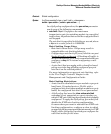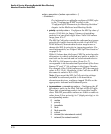
Quality of Service: Managing Bandwidth More Effectively
Advanced Classifier-Based QoS
Classifier-Based QoS Model
Classifier-based QoS configuration consists of the following general steps:
1. Classify the traffic that you want to manage by configuring a class.
2. Configure a QoS policy in which you specify the QoS actions to execute
on each class of traffic.
3. Assign the QoS policy to a port or VLAN (inbound only) interface.
Note Classifier-based QoS operation supports all globally-configured packet classi-
fication criteria (except for Source-port and Layer-3 protocol) and traffic
marking functions, and provides additional QoS actions on a per-port and per-
VLAN basis.
■ Classifier-based match criteria on inbound IPv4/IPv6 traffic include:
• IP source address (IPv4 and IPv6)
• IP destination address (IPv4 and IPv6)
• IP protocol (such as ICMP or SNMP)
• Layer 3 IP precedence bits
• Layer 3 DSCP codepoint
• Layer 4 TCP/UDP application port (including TCP flags)
• VLAN ID
■ Classifier-based QoS policy actions on matching IPv4/IPv6 packets are as
follows:
• Setting the Layer 2 802.1p priority value (class of service) in VLAN-
tagged and untagged packet headers
• Setting the Layer 3 IP precedence bits
• Setting the Layer 3 Differentiated Services Codepoint (DSCP) bits
• Rate-limiting inbound traffic on port and VLAN interfaces
Classifier-Based QoS Configuration Procedure
To use the classifier-based model to configure a QoS policy and apply it to a
selected class of traffic on a port or VLAN interface, follow these steps:
1. Evaluate the types of traffic in your network and identify the traffic types
that you want to prioritize or rate-limit.
6-71



